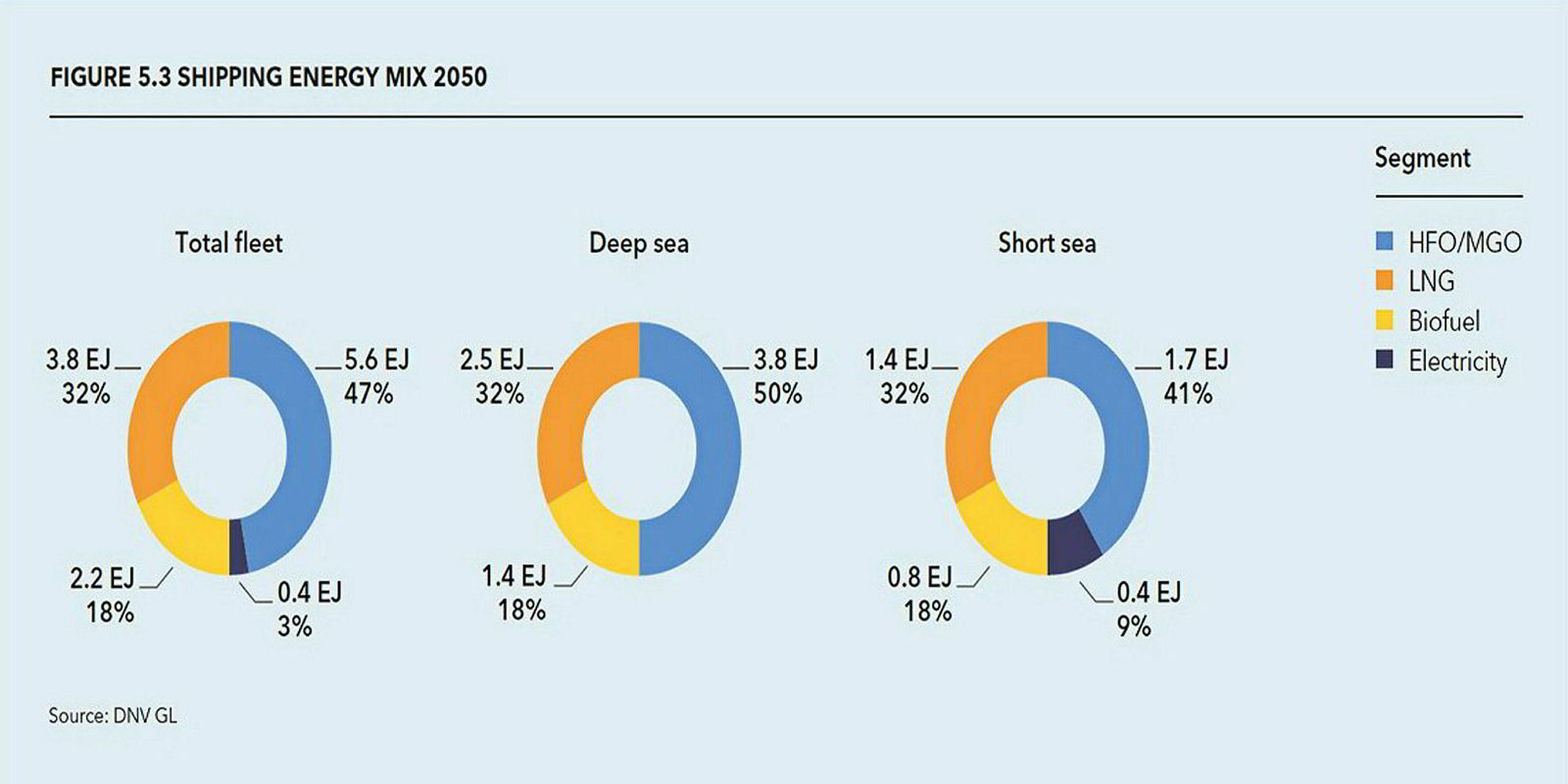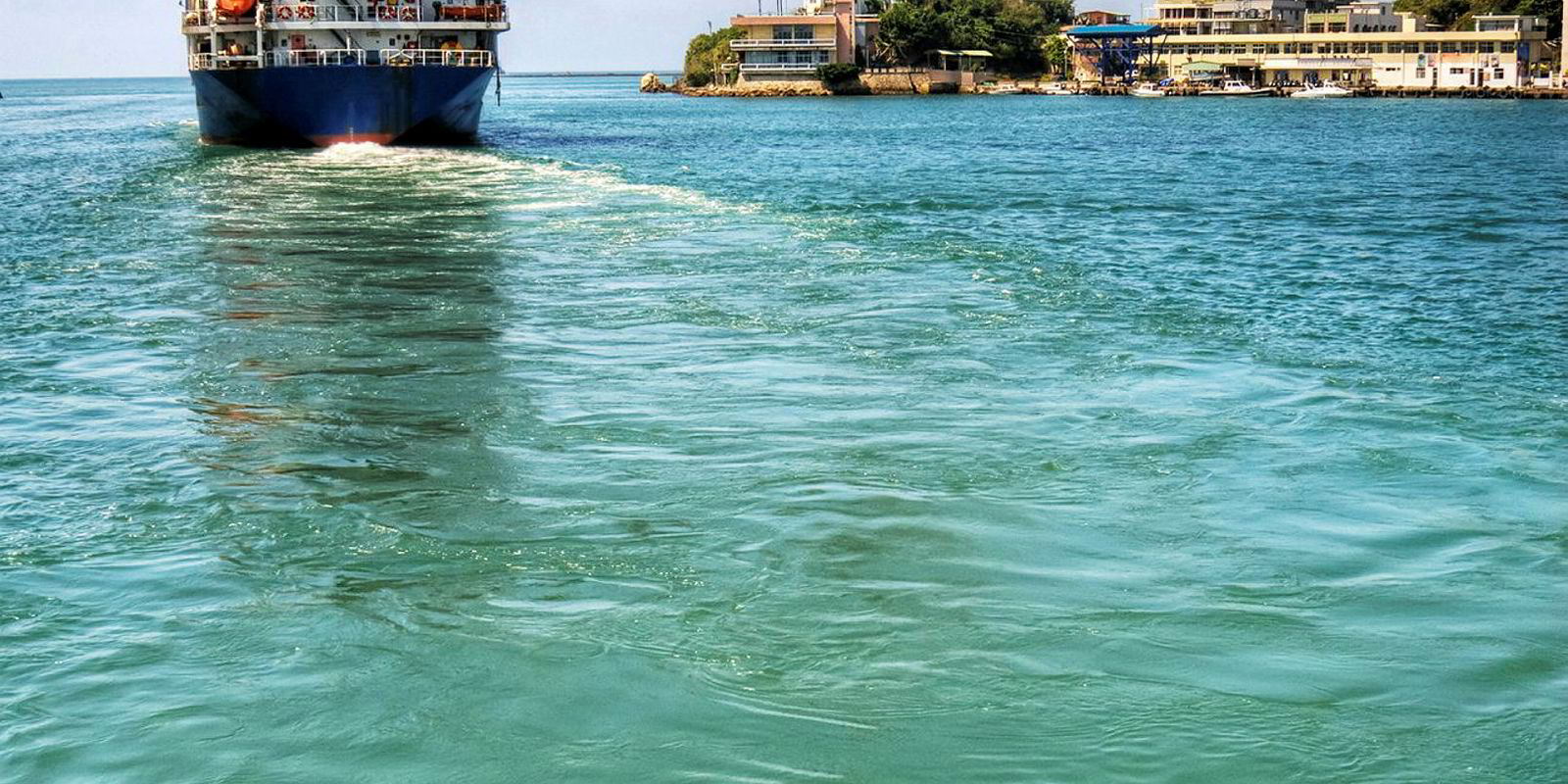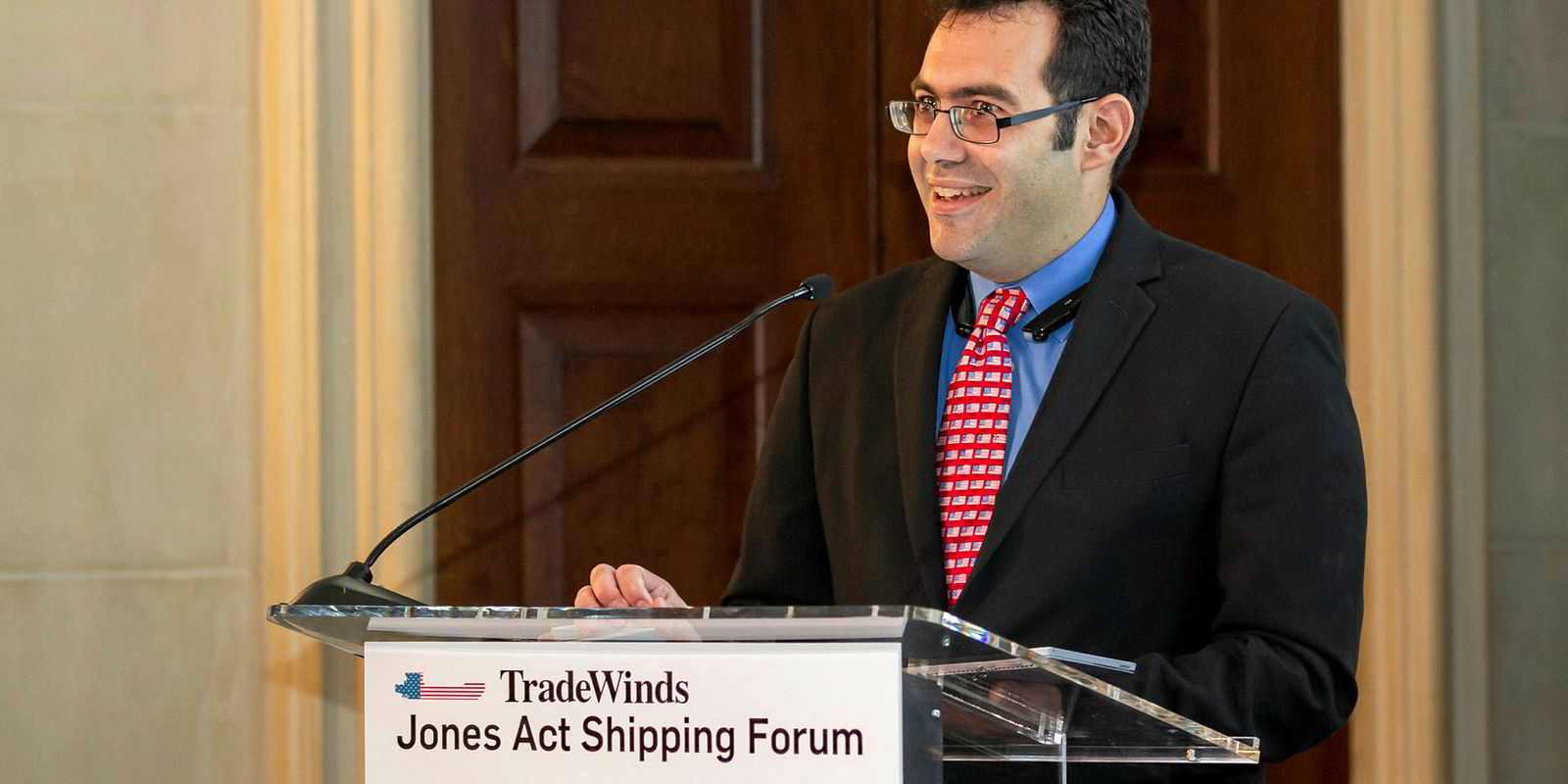An in-depth study into shipping’s future energy profile suggests only half of the world’s fleet will be burning petroleum-based fossil fuels by 2050, helping to achieve a significant improvement in the industry’s carbon footprint.
In the recently released study “Energy Transition Outlook — Maritime”, classification society DNV GL is forecasting that only 50% of the deepsea fleet will be powered by heavy fuel oil or marine gas oil by the mid point of this century, while 32% of the fleet will opt for LNG and 18% for biofuel.
An increasing use of alternative fuels, added to other efficiency gains from technology, should result in a reduction in shipping’s carbon emissions.
DNV GL calculates that shipping’s carbon efficiency — that is the amount of CO2 emitted per tonne of cargo carried — should improve by 51% by 2050.
It further predicts that carbon emissions will fall from 800 million tonnes to 594 million tonnes by 2050. That reduction in carbon emissions will come despite a 57% increase in global transport demand and a 48% rise in the world fleet in deadweight tonnage terms to 2050.
“Greater energy efficiency coupled with speed reduction will see energy use per tonne mile shrink by 35% to 40%, with the highest potential reduction being in container, LNG tanker and other cargo carriers,” DNV GL says.
“For tankers and bulkers, as current operating patterns already include slow steaming, further reductions will be harder to achieve.”
DNV GL estimates there will be an average improvement in ship efficiency of around 18% due to the adoption of technology and design improvements in hull form and machinery.
It calculates that a further on-average decrease of 5% in vessel speeds will bring a 10% reduction in fuel consumption.
Digitalisation and other improvements in the efficiency of the logistics chain should also result in a 25% improvement in vessel utilisation in the deepsea trades, with the exception of the bulk trades in which utilisation will only improve by around 5%.
The ongoing trend towards larger vessels will also play a part in improving efficiency, with DNV GL forecasting an average 40% increase in the size of LNG carriers and 30% growth in the size of containerships, while the bulk sector will see a more modest 10% rise in the average size of ships.

DNV GL also points out that an ongoing initiative at the IMO to ensure shipping contributes to the goals of the Paris Agreement has the potential to accelerate some of the developments it is forecasting. However, the classification society believes it will take more than a decade for the IMO initiative to gain traction.
“If the [IMO] strategy is successful and is supported by governments and other international bodies, decarbonisation of the sector will progress further and faster than projected," DNV GL says. "That said, IMO requirements will, in any case, not take effect before 2023, and its greenhouse gas strategy may not have a significant impact before the end of the next decade.”




